- Home
- Jerry Spinelli
Knots in My Yo-Yo String Page 7
Knots in My Yo-Yo String Read online
Page 7
Still, whether I knew it or not, words were claiming me. When I visited Hartenstine Printing, where my father worked as a typesetter, I saw words being created letter by letter, one thin slug of lead at a time.
Once, in a comic book, someone with a bad heart was described as having a bum ticker. That tickled me to no end. I kept whispering “bum ticker” to myself for days.
Except for the Heap, my favorite comic book characters were Bugs Bunny and Daffy Duck. I liked them as much for their words as their ways. For me, the highlight of a scene was not what happened, but what Bugs or Daffy said about what happened. This is probably why Mickey Mouse never much appealed to me. His speech was too bland for my taste.
When I was eleven or twelve, my mother and I laughed for months over a corny old vaudeville joke that I kept asking her to repeat. She gave the joke a local twist. It went like this:
Man goes to the beach for a vacation. Goes into the water. When he comes out, he sees a lady sitting next to his blanket.
He says, “Hi, I’m a little stiff from swimming.”
She says, “Hello, I’m a secretary from Norristown.”
(I’m laughing again.)
Occasionally I had to look up a word in the dictionary. Sometimes my eye would stray to the surrounding words. Invariably it stopped at an interesting one, and I read the definition. In one such instance I discovered that I was a gossoon. I clearly remember two feelings attached to these moments: (1) surprise that a dictionary could be so interesting, and (2) a notion to sit down and look through more pages. I never did.
And then of course there was my success in spelling.
All of these items were indicators of an early leaning toward language, but I failed to see them as such. The tickle of a rabbit’s wit, the rattle of alphabet in a compositor’s drawer—they simply took their place among the Popsicles and penknives and bike tires of my days.
With one exception.
In sixth grade our teacher assigned us a project: Make a scrapbook of Mexico. I found pictures of Mexico in National Geographic and other magazines and pasted them in my scrapbook, for which my father made a professional-looking cover at the print shop. Then I did something extra. It wasn’t part of the assignment. I just did it.
I wrote a poem.
Three stanzas about Mexico, ending with a touristy come-on: “Now, isn’t that where you would like to be?” I wrote it in pencil, longhand, my best penmanship, on a piece of lined classroom paper. I pasted it neatly on the last page of my scrapbook and turned in my project.
Several days later my mother walked the three blocks to my school. She met with my teacher, who told her she did not believe that my poem about Mexico was my own work. She thought I copied it from a book. (Hah! If she only knew how few books I read, and never one with poetry.) I was suspected of plagiarism.
I don’t know what my mother said to her, but by the time she walked out I was in the clear, legally at least. Five years would pass before I wrote another poem.
Staying in the Lines
I was neat.
How neat was I? Say I had to cut a rectangle out of a piece of paper. First I would measure a perfect shape with my ruler, then draw it with a sharp pencil. Then with my scissors I would cut it out. But not just cut it out. I would cut precisely along the right edge of the pencil line, or precisely along the left edge, or I would split the line in half and cut precisely right down the middle. Consistently, all the way around the rectangle.
In seventh grade at Stewart Junior High, I astonished my shop teacher, Mr. Rohn, with the precision of my mechanical drawings and the perfection of my hand-lettering.
That same year I won numerous Palmer Method penmanship certificates and was declared the outstanding boy penmeister.
Every Eastertime the merchants of the West End shopping district—three blocks on Marshall Street—sponsored a coloring contest. Every day for two weeks line drawings—coloring-book-type pictures—were printed in the Times Herald. Each business had its own picture. Kids were invited to cut out the pictures, color them, and deposit their entries in boxes in the stores.
Unlike most kids, I did not use crayons. I used colored pencils. My frequently sharpened points never—never—strayed outside the lines. And my colors were right, too. No green sky or red grass for me.
For me, staying inside the lines was more than a color-the-picture matter.
Give me a direction, I followed it. Put a rule in front of me, I obeyed it. In twelve years I never stayed after school for detention. Once, though, I came close. It happened in the spring of ninth grade. Our homeroom teacher, Miss Busch, announced that our lockers would be reviewed for neatness. Since I kept my locker neat at all times, there was nothing for me to tidy up.
The next morning as the students entered Homeroom 213, we looked to the blackboard for the names of those whose lockers failed to pass muster. Shockingly, my name was among them. The punishment, besides cleaning up the offending locker, was detention.
I told Miss Busch there must be a mistake. She said there wasn’t. I said I wouldn’t be there for detention. It was the only time I ever talked back to a teacher. She said I’d be sorry.
After school that day, as usual, I went to baseball practice. When I arrived at school the next morning, I discovered I was no longer on the team. Nor was I homeroom president. I was stripped of every office and association.
My locker may have been tidy, but suddenly my life was a mess. One day of watching my backup shortstop was enough. I couldn’t stand it. I apologized to Miss Busch, and the picture of my life fell back into place.
I loved routine, repeatedness. To do the same thing twice was to establish a personal tradition. In other words, where there were no lines, I drew my own. I stepped inside and stayed there—cozy, safe.
Summer Saturdays, for example. In the morning I walked a mile from George Street to the YMCA. There I played Ping-Pong in the game room with Lee Holmes, Ralph Cottman, and others. Then a screen and projector were brought out, the lights turned off, and we all settled in to watch a black and white movie, usually a Tarzan adventure.
After the movie I walked down to Main Street, past Block’s department store, past the Norris Theater, to Texas Hot Wieners. The best hot dogs in town were sizzling right there in the front window, daring each passerby not to come in. I sat at the counter and placed my order, always the same: hot dog with mustard and chopped onions, and chocolate milk. I’ve had a lot of wimpy hot dogs since then, hot dogs so soft you can’t feel your teeth go through them, so mushy with fat and cereal you could almost drink them with a straw. Not Texas Hot Wieners. They had spunk. They fought back.
By now it was one o’clock. Across the street I went to the Garrick Theater and the Saturday matinee double feature—cowboy movies plus a Flash Gordon or Captain Midnight serial.
Hours later I emerged blinking in the late-afternoon sun. I walked home along Markley Street, past the sweet-smelling Wonder Bread plant, the sidewalk dusty with flour, past the Times Herald, over the Markley Street bridge that spanned Stony Creek. I always stopped at the bridge railing to look for sunfish in the sparkling water below. Only when I spotted one would I continue my journey homeward.
Every summer Saturday. The same thing.
Needless to say, I was well acquainted with perfect attendance in school. Most years went by without my missing a day.
When I walked, I trained myself to keep my feet pointed straight ahead, not pigeon-toed or splayed outward.
I even fantasized about neatness. I imagined our house had been selected for a visit by President Eisenhower. I saw myself going from room to room putting everything precisely in its place. On the racks in the bathroom the corners of the towels came together perfectly.
In another fantasy I set out to tidy up the world. Anything I couldn’t fix with hedge trimmers and lawn mower I paved over with asphalt. By the time I was finished, the Amazon jungle looked like the flower beds and crewcut lawns of the North End of Norristown.
I spread my peanut butter evenly over my bread.
I never said bad words (unless you count “poop”).
I hardly ever laughed out loud.
As I said, I was neat. And though I did not think of it this way, I believe that what I was actually trying to do was to become perfect.
Funny thing: For all my neatness, my sharp pencil points, my devotion to the right side of the line, I never won the West End shopping district coloring contest. Every year I tried harder than before, tried to be even neater, and still I lost. I couldn’t figure out why.
Wasn’t neatness enough? Wasn’t perfection possible?
No, said my yo-yo. Often I had what seemed to be a perfect day—100 on a spelling test, winning touchdown in a pickup game, a new haircut—only to come home and find knots in my yo-yo string. I began to think the string had a mind of its own. I imagined it waiting until I wasn’t looking, then rising up like a cobra and looping itself into knots. My paranoia seemed confirmed one morning when I awoke to find knots that I could have sworn were not there when I went to bed.
When I was eleven and twelve, I played Biddy basketball, the equivalent of Little League baseball. In my final year I made the all-star team, but not because I was a great scorer. The most points I ever scored in a game was twelve, and usually it was half that. I think I made the all-stars as much for what I did not do as for what I did. That is to say, I did not make mistakes.
Playing the guard position, I dribbled a lot and passed a lot. But these were relatively risk-free ventures. Shooting was where the risk was, and I rarely took more than five shots in a game. I wasn’t a bad shooter, but each shot I missed discouraged me from taking more. At home after each game, I neatly entered into a notebook my statistics: assists, shots taken, shots made, fouls. Of course I hardly ever committed a foul. And because I played the game so carefully, I never found out how good a basketball player I might have become. Too late I learned that neatness does not serve all endeavors equally well, that what is good for penmanship is not necessarily good for basketball.
A willingness to take risks, to color outside the lines, was slow in coming to me. Some stubborn idea of perfection deterred me from fully extending myself in simple, pure participation. I was too afraid to fail. I did not appreciate the value of a mess.
Not that I wasn’t given the chance. Looking back, I can see now that that’s what the school-locker incident was: an opportunity to grow beyond my own self-imposed limits. And for one day, I did. Falsely accused of having a disorderly locker, I was properly outraged. I defied my teacher. I refused to submit to injustice. I turned my back on detention. I charged across the line. I became a new me.
Then came the consequences—banishment from the baseball team, from all offices. Did I rise up and cry, “Punish me if you will! I don’t care! I will never capitulate to this injustice”? Did I finish out the year in noble exile, stripped of all honors? Did I stand up for what I knew was right?
No.
I caved in. I apologized for protesting an unjust verdict. My life was reinstated. Order was restored, the mess was cleaned up. I was back inside the lines. Once again I was the old familiar me.
Yet even as I publicly conformed in word and deed, a contrary tendency was forming within me. It showed briefly in sixth grade when I wrote the unassigned poem on Mexico. It showed in my neatness fantasies—not in the subject matter but in the mere act of fantasizing. It showed in my swooning wonderment over the endlessness of the sky at night.
And it showed most commonly in my own version of the Garrick Theater’s double features. When an event in my life—say, a baseball game—was over, it was not really over. For that night in bed I would relive it in my head. I would again see the vivid colors and hear the voices and feel the feelings, and the reliving would be, in its own way, as real to me as the first time around. Sometimes it was even better. Sometimes I couldn’t wait for the event to be over and bedtime to arrive so that I could play it back.
As I have said, if you had asked me what I would grow up to be, I would have answered, “A baseball player.” But even as I oiled the deep, fragrant pocket of my Marty Marion glove and taped the hickory handle of my thirty-three-ounce bat, I was unknowingly developing the tool of another trade. The urge to write a poem, to daydream, to ruminate, to wonder, even my tolerance of solitude—all became components of a bearing that I would never have guessed would fit me so well, an aptitude that thrives on disorder, that welcomes green sky and red grass, that serves neither master nor homeroom teacher, that respects no line or limit. I speak, of course, of imagination—a gift that, like my Roadmaster on that Christmas morning, waited in another room for my discovery.
Dr. Winters’
Finger
There was one line in my life that I did cross freely, frequently, and deliberately. This line ran from one end of town to the other and it had a name.
DeKalb Street.
That is its name in Norristown. Elsewhere it is known as U.S. Route 202, running from Delaware up to Maine. DeKalb Street came off the bridge across the Schuylkill and ran south to north past the Reading Railroad station, past Hartenstine Printing where my father worked, past Yost’s Dry Goods and Sames Book Store and First Presbyterian and city hall and the YWCA and St. Patrick’s Church and on past the large stone homes of the North End and across Johnson Highway and out of town.
But DeKalb Street divided more than east from west in Norristown. It also divided black from white. With few exceptions, African Americans lived to the east of DeKalb Street. So did many Italian Americans, including my grandparents and, for a while—at 224 Chestnut—me.
My first memory of a black person dates to that time, when I was three or four. My mother took me with her to the dentist one day. The dentist was Dr. Winters. Dr. Winters was black. His office was in the East End.
The story as I have sometimes told it goes like this: My mother has her dental work done while I sit off to the side. When Dr. Winters is finished, I decide I’m jealous of all the attention my mother has been getting. I want some, too. So the dentist hoists me into the chair, tells me to open wide, and checks me over.
In truth, my mother and I have no specific recollection of why I wound up in the dentist’s chair. My memory is clear, however, on one thing: Dr. Winters’ finger in my mouth. I can feel it, I can see its dark brownness. I notice that it is a color different from my own, but that’s all there is to it, a flat, casual observation. What I feel is the rightness of that thick and hard and smooth and gentle and expert finger. My mouth yields naturally to it, seems to recognize that this is the way of things.
Dr. Winters never actually worked on my teeth, but to this day the sense and touch of that “examination” is inscribed vividly in my memory.
Though I lived in the East End for several years, I had no black friends or playmates. Halfway through first grade we moved to George Street, where everyone was white. In my class at Hartranft Elementary there was only one black student, a girl, Viola Fisher. For six years Viola Fisher barely said a word, barely moved. Though her color made her conspicuous at Hartranft, her demeanor rendered her all but invisible. Socially speaking, we white students did not see Viola Fisher.
Looking back today, I can easily imagine Viola Fisher’s discomfort. I imagine she often wished she could attend Washington School, deep in the East End, where almost all the students were black. I imagine she was afraid of us. And that’s ironic, because in grade school, in my experience, fear went the other way: we were afraid of them. At least I was.
One day when I was nine, a black boy about my age walked up to me on a school playground, made a fist, and clipped me on the tip of my chin. Thock. That was all. The punch did not hurt me, at least not my chin. Nor did the boy seem interested in continuing. Perhaps he simply wanted to make some point. Perhaps it was something he needed to do, as several years later I “needed” to clip Joey Stackhouse on the chin. Whatever, at that moment my fear of black kids felt confirmed. I turned from the bo
y, trotted over to a nearby tree, knelt in the surrounding dirt, dumped out my bag of marbles, and began shooting mibs.
The fear that steered me through streets and playgrounds came from a perception for which I had no words, a perception I did not question. It said that black people were different from me in ways that went beyond skin color. It did not tell me how they were different, just that they were different. It is not clear how I acquired this information. I don’t believe it came from home, yet somehow, from the world around me, I absorbed it.
There were signs everywhere. I saw, I heard, but that was all. I did not much think. I did not question.
Crayola crayons came in small and large boxes. The large box contained a pale pink-orange color called flesh. I did not often use it. After all, the pages of the coloring book were white, so it was easier to simply leave faces untouched. I never asked, “Whose flesh?”
The most popular private trash collector in town was a black man. He worked hard. In the summer especially he became thirsty. Sometimes he would ask a business client if he could get a drink of water from their faucet, and he would show the glass that he always carried with him. He was widely commended for this. I never asked him, “What do you think would happen if you didn’t bring your own glass?”
I once attended a picnic of mixed races. Things were going along normally when, with the picnic only half over, I suddenly noticed that all the black people were gone. I did not run after them and call out, “Wait! Why are you leaving early?”
When my father took me to high school basketball games, I noticed that most of the black people sat in one section of the bleachers. I never asked, “Why do they always sit together?” Or, “Why do we always sit together?”
I saw these little separations in a hundred places and a hundred ways, and never once did I say, “Why?”
Though I had neither wit nor grit to ask such questions, sometime in grade school my point of view began to change. It happened when I gave up cowboys and soldiers and turned to sports.

 Who Put That Hair in My Toothbrush?
Who Put That Hair in My Toothbrush?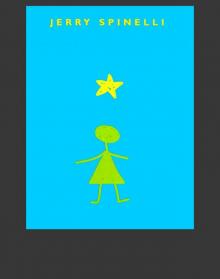 Stargirl
Stargirl Loser
Loser Jake and Lily
Jake and Lily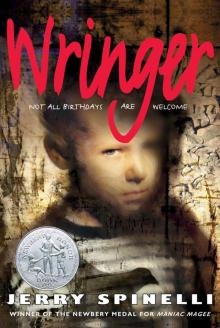 Wringer
Wringer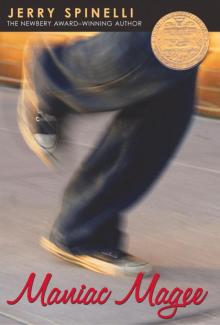 Maniac Magee
Maniac Magee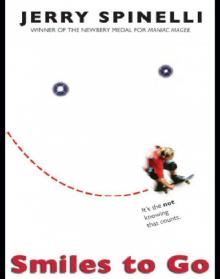 Smiles to Go
Smiles to Go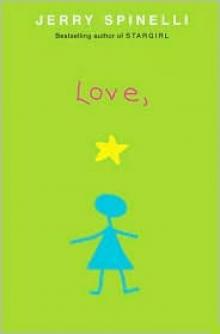 Love, Stargirl
Love, Stargirl Hokey Pokey
Hokey Pokey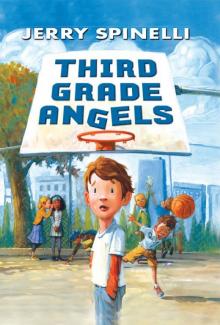 Third Grade Angels
Third Grade Angels Tooter Pepperday: A Tooter Tale
Tooter Pepperday: A Tooter Tale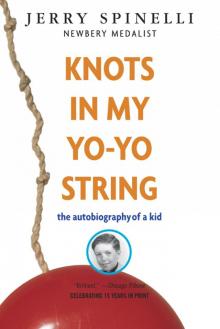 Knots in My Yo-Yo String Knots in My Yo-Yo String
Knots in My Yo-Yo String Knots in My Yo-Yo String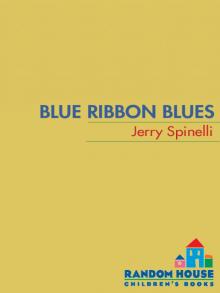 Blue Ribbon Blues: A Tooter Tale
Blue Ribbon Blues: A Tooter Tale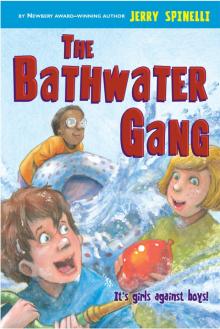 The Bathwater Gang
The Bathwater Gang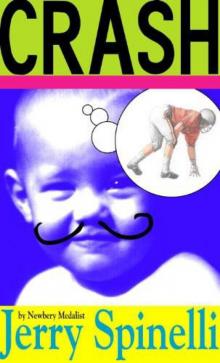 Crash
Crash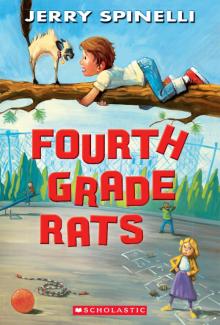 Fourth Grade Rats
Fourth Grade Rats Eggs
Eggs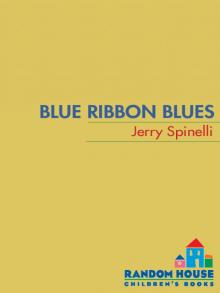 Blue Ribbon Blues
Blue Ribbon Blues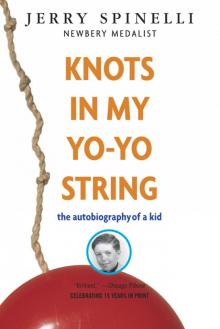 Knots in My Yo-Yo String
Knots in My Yo-Yo String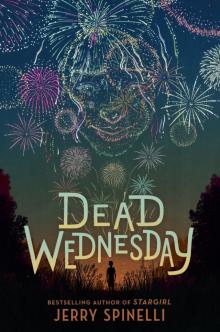 Dead Wednesday
Dead Wednesday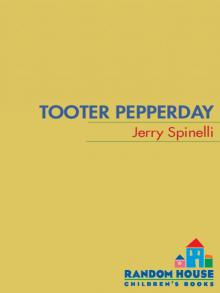 Tooter Pepperday
Tooter Pepperday